-
 Bitcoin
Bitcoin $108,489.6704
1.13% -
 Ethereum
Ethereum $2,502.0528
2.92% -
 Tether USDt
Tether USDt $1.0002
0.00% -
 XRP
XRP $2.1941
0.51% -
 BNB
BNB $655.3375
1.00% -
 Solana
Solana $151.5977
1.27% -
 USDC
USDC $0.9999
0.00% -
 TRON
TRON $0.2768
0.32% -
 Dogecoin
Dogecoin $0.1676
2.86% -
 Cardano
Cardano $0.5675
0.98% -
 Hyperliquid
Hyperliquid $40.6109
7.48% -
 Bitcoin Cash
Bitcoin Cash $500.7746
2.09% -
 Sui
Sui $2.8328
2.03% -
 Chainlink
Chainlink $13.4452
1.26% -
 UNUS SED LEO
UNUS SED LEO $9.1623
0.39% -
 Avalanche
Avalanche $18.2267
2.24% -
 Stellar
Stellar $0.2382
0.00% -
 Toncoin
Toncoin $2.8885
1.68% -
 Shiba Inu
Shiba Inu $0.0...01159
0.91% -
 Litecoin
Litecoin $87.1827
0.88% -
 Hedera
Hedera $0.1511
2.90% -
 Monero
Monero $315.4992
-0.59% -
 Polkadot
Polkadot $3.4663
2.34% -
 Bitget Token
Bitget Token $4.6118
-0.65% -
 Dai
Dai $1.0000
-0.01% -
 Ethena USDe
Ethena USDe $1.0003
0.02% -
 Uniswap
Uniswap $7.2989
4.69% -
 Pepe
Pepe $0.0...01003
5.73% -
 Aave
Aave $275.5616
7.15% -
 Pi
Pi $0.5181
-2.49%
What is the role of a decentralized oracle? How does it provide external data to smart contracts?
Decentralized oracles bridge blockchain and real-world data, enabling smart contracts to use external info for finance, insurance, and supply chain applications.
May 06, 2025 at 08:56 pm
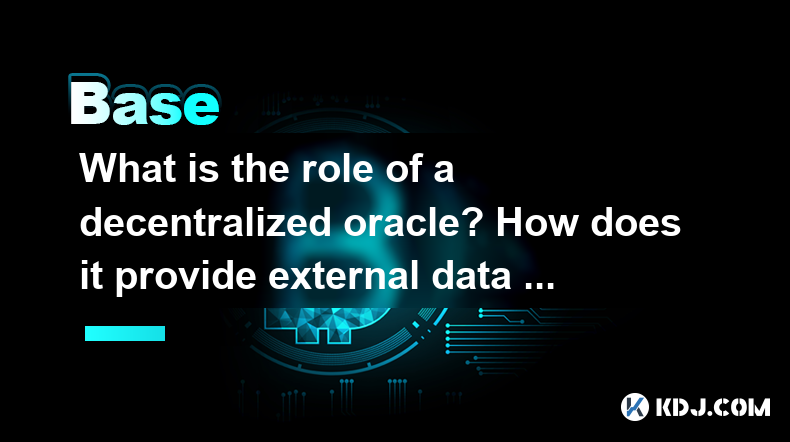
Decentralized oracles play a crucial role in the world of blockchain and smart contracts by serving as a bridge between the blockchain and the real world. Smart contracts are self-executing programs that run on the blockchain and are designed to automatically enforce the terms of an agreement. However, these contracts often require data from outside the blockchain to function effectively. This is where decentralized oracles come into play, as they fetch, verify, and deliver external data to the blockchain, enabling smart contracts to interact with real-world events and data.
What is a Decentralized Oracle?
A decentralized oracle is a system or network that provides external data to smart contracts on a blockchain. Unlike centralized oracles, which rely on a single source of data, decentralized oracles aggregate data from multiple sources to ensure accuracy and reliability. This decentralized approach helps mitigate the risk of manipulation and increases the trustworthiness of the data provided to smart contracts.
How Do Decentralized Oracles Work?
Decentralized oracles operate by collecting data from various external sources, such as APIs, websites, and other data providers. This data is then processed and verified through a consensus mechanism among the nodes in the oracle network. Once the data is validated, it is securely transmitted to the blockchain, where it can be accessed by smart contracts.
- Data Collection: The oracle network begins by gathering data from multiple sources. This could include financial data, weather information, sports results, or any other type of data that a smart contract might need.
- Data Verification: The collected data is then verified by multiple nodes within the oracle network. This step ensures that the data is accurate and has not been tampered with.
- Data Transmission: After verification, the data is formatted and sent to the blockchain, where it becomes available for smart contracts to use.
Types of Decentralized Oracles
There are several types of decentralized oracles, each designed to serve specific purposes within the blockchain ecosystem. Some of the most common types include:
- Software Oracles: These oracles fetch data from online sources such as APIs and websites. They are commonly used for financial data, weather updates, and other real-time information.
- Hardware Oracles: These oracles collect data from physical devices and sensors. They are useful for applications that require real-world data, such as IoT devices and supply chain management.
- Consensus Oracles: These oracles rely on a consensus mechanism to validate data. Multiple nodes in the network agree on the accuracy of the data before it is transmitted to the blockchain.
- Human Oracles: These oracles involve human input to verify data. They are often used for tasks that require human judgment, such as legal or medical data.
Benefits of Decentralized Oracles
Decentralized oracles offer several benefits that make them an essential component of the blockchain ecosystem. Some of these benefits include:
- Increased Security: By using multiple data sources and a consensus mechanism, decentralized oracles reduce the risk of data manipulation and increase the security of the data provided to smart contracts.
- Improved Reliability: The use of multiple data sources ensures that the data provided to smart contracts is more reliable and less prone to errors.
- Enhanced Transparency: Decentralized oracles operate on a transparent network, allowing users to verify the data and the processes used to collect and validate it.
- Broader Application: By providing access to external data, decentralized oracles enable smart contracts to be used in a wider range of applications, from finance and insurance to supply chain management and gaming.
Use Cases of Decentralized Oracles
Decentralized oracles have a wide range of applications within the blockchain ecosystem. Some of the most notable use cases include:
- Financial Services: Decentralized oracles can provide real-time financial data to smart contracts, enabling the creation of decentralized finance (DeFi) applications such as lending platforms, prediction markets, and stablecoins.
- Insurance: Smart contracts can use data from decentralized oracles to automatically trigger insurance payouts based on real-world events, such as natural disasters or flight delays.
- Supply Chain Management: Decentralized oracles can provide data from IoT devices and sensors to track the movement of goods and ensure the integrity of supply chains.
- Gaming and Betting: By providing real-time data on sports results and other events, decentralized oracles enable the creation of decentralized gaming and betting platforms.
How to Integrate a Decentralized Oracle with a Smart Contract
Integrating a decentralized oracle with a smart contract involves several steps. Here is a detailed guide on how to do it:
- Choose an Oracle Service: The first step is to select a decentralized oracle service that meets your needs. Popular options include Chainlink, Band Protocol, and Tellor.
- Set Up the Oracle Contract: Once you have chosen an oracle service, you will need to set up an oracle contract on the blockchain. This contract will serve as the interface between your smart contract and the oracle service.
- Request Data: Your smart contract will need to request data from the oracle contract. This is typically done by calling a function in the oracle contract that specifies the type of data needed and any parameters.
- Receive Data: Once the oracle contract has collected and verified the data, it will send it back to your smart contract. Your smart contract can then use this data to execute its logic.
- Verify and Use Data: Finally, your smart contract should verify the data received from the oracle contract and use it to perform its intended function. This could involve triggering a payment, updating a record, or any other action specified in the smart contract.
Challenges and Considerations
While decentralized oracles offer many benefits, there are also some challenges and considerations to keep in mind. These include:
- Cost: Using decentralized oracles can incur additional costs, as they often require payment for data retrieval and processing.
- Latency: There may be a delay between the time data is requested and when it is received by the smart contract, which can impact the performance of time-sensitive applications.
- Data Privacy: Depending on the type of data being used, there may be concerns about data privacy and security.
- Scalability: As the demand for decentralized oracles grows, ensuring that they can scale to meet the needs of a large number of smart contracts is a significant challenge.
Frequently Asked Questions
Q: Can decentralized oracles be used with any blockchain?
A: Yes, decentralized oracles can be used with various blockchains, including Ethereum, Binance Smart Chain, and others. However, the specific implementation may vary depending on the blockchain's architecture and the oracle service being used.
Q: How do decentralized oracles ensure the accuracy of the data they provide?
A: Decentralized oracles ensure data accuracy by aggregating data from multiple sources and using a consensus mechanism to validate the data. This approach helps to minimize the risk of errors and manipulation.
Q: Are there any alternatives to decentralized oracles for providing external data to smart contracts?
A: Yes, alternatives include centralized oracles, which rely on a single data source, and hybrid oracles, which combine elements of both centralized and decentralized approaches. However, decentralized oracles are generally considered more secure and reliable due to their use of multiple data sources and consensus mechanisms.
Q: How can developers test the integration of a decentralized oracle with their smart contract?
A: Developers can test the integration by using testnets provided by the oracle service and the blockchain platform. These testnets allow developers to simulate the interaction between the smart contract and the oracle without incurring the costs associated with the mainnet.
Disclaimer:info@kdj.com
The information provided is not trading advice. kdj.com does not assume any responsibility for any investments made based on the information provided in this article. Cryptocurrencies are highly volatile and it is highly recommended that you invest with caution after thorough research!
If you believe that the content used on this website infringes your copyright, please contact us immediately (info@kdj.com) and we will delete it promptly.
- Ripple, Stablecoin, Adoption: RLUSD Leading the Charge
- 2025-06-30 14:30:12
- Bitcoin ETF, IBIT, and the Bull Flag: Is $144,000 on the Horizon?
- 2025-06-30 14:50:12
- Bitcoin, Passive Income, and a Bull Raise: Riding the Crypto Wave
- 2025-06-30 14:30:12
- Bitcoin, Personal Loans, and Omega 88: A New Era in Lending?
- 2025-06-30 15:09:14
- Saylor's Strategy: How MicroStrategy's Bitcoin Bet is Reshaping Finance
- 2025-06-30 14:52:14
- Metaplanet's Bitcoin Blitz: From Zero to Hero in the Corporate Treasury Race
- 2025-06-30 15:10:54
Related knowledge
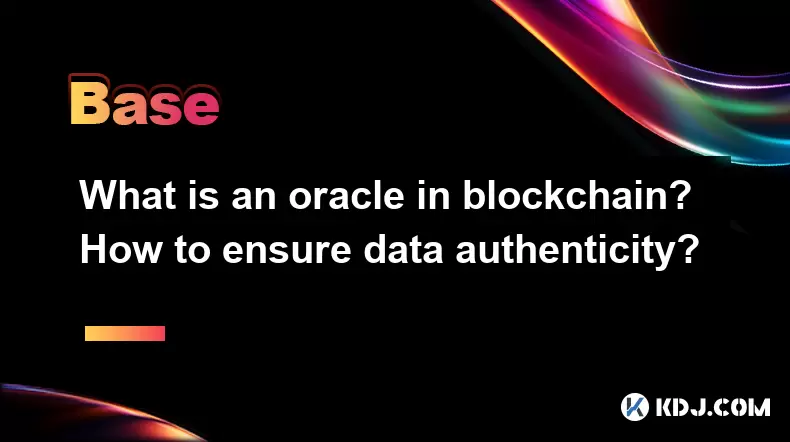
What is an oracle in blockchain? How to ensure data authenticity?
Jun 19,2025 at 08:49pm
Understanding the Role of an Oracle in BlockchainIn the context of blockchain technology, an oracle serves as a bridge between the blockchain and external data sources. While blockchains are inherently secure and decentralized, they cannot access real-world information on their own. Oracles enable smart contracts to interact with off-chain data such as ...
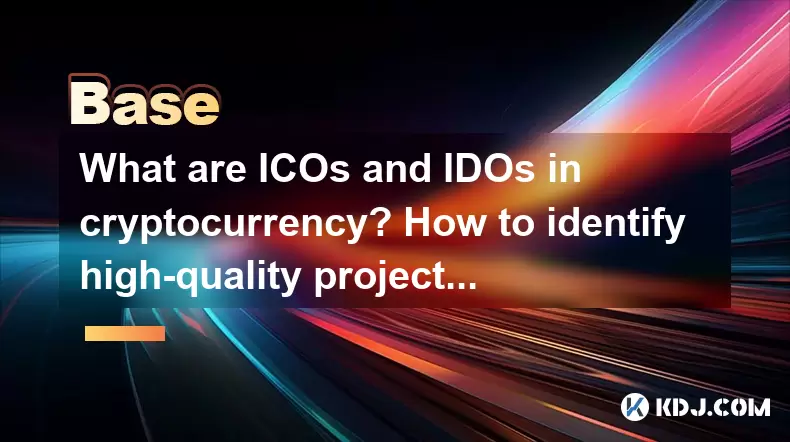
What are ICOs and IDOs in cryptocurrency? How to identify high-quality projects?
Jun 22,2025 at 11:49am
Understanding ICOs in CryptocurrencyInitial Coin Offerings (ICOs) are fundraising mechanisms used by cryptocurrency startups to raise capital for their projects. In an ICO, a company creates and sells its own tokens to investors in exchange for established cryptocurrencies like Bitcoin or Ethereum. The process typically involves the release of a whitepa...
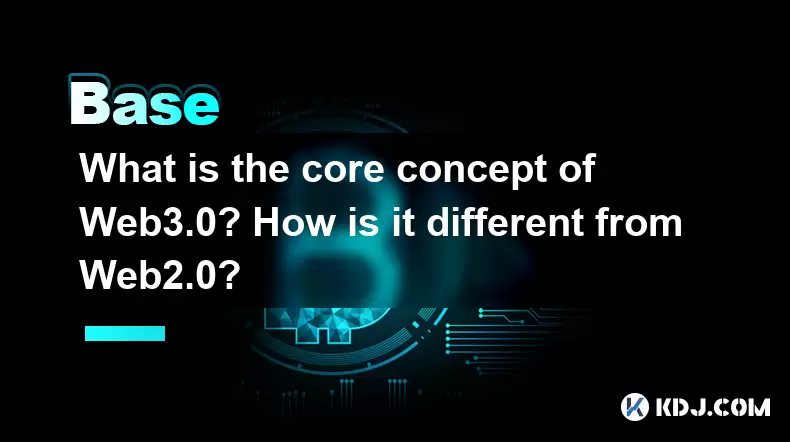
What is the core concept of Web3.0? How is it different from Web2.0?
Jun 21,2025 at 05:56pm
Decentralization as the Foundation of Web3.0The core concept of Web3.0 revolves around decentralization, which fundamentally challenges the centralized architecture of Web2.0. In Web3.0, control and ownership are distributed across a network rather than being held by a central authority or corporation. This is achieved primarily through blockchain techn...
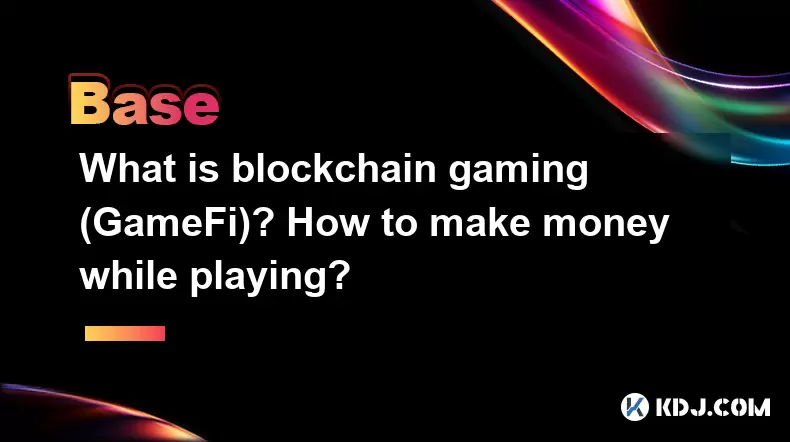
What is blockchain gaming (GameFi)? How to make money while playing?
Jun 20,2025 at 07:56am
Understanding Blockchain Gaming (GameFi)Blockchain gaming, often referred to as GameFi, is a fusion of blockchain technology and video games. It enables players to own in-game assets through non-fungible tokens (NFTs) and earn rewards via cryptocurrencies or token-based systems. Unlike traditional games where items are controlled by centralized develope...
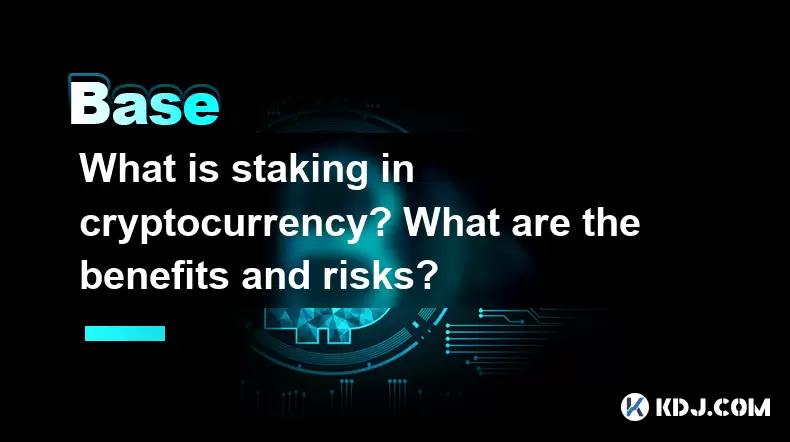
What is staking in cryptocurrency? What are the benefits and risks?
Jun 22,2025 at 10:01am
Understanding the Concept of Staking in CryptocurrencyStaking in cryptocurrency refers to the process of actively participating in transaction validation on a blockchain network that uses a Proof-of-Stake (PoS) consensus mechanism. Instead of miners competing to solve complex mathematical puzzles as in Proof-of-Work systems like Bitcoin, PoS blockchains...
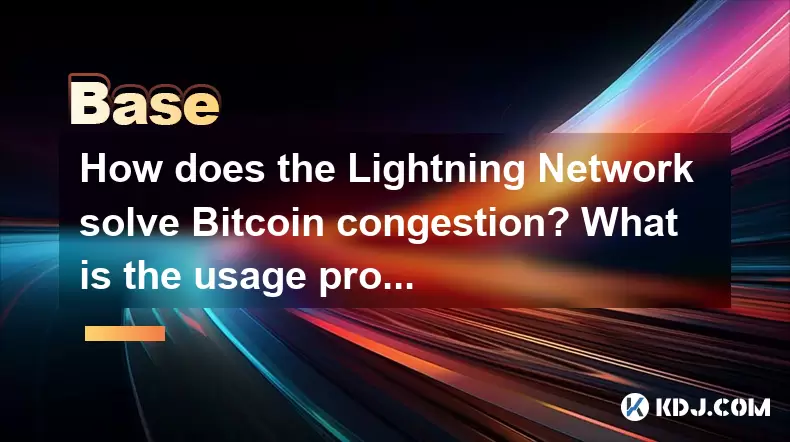
How does the Lightning Network solve Bitcoin congestion? What is the usage process?
Jun 23,2025 at 06:21pm
Understanding Bitcoin Network CongestionBitcoin, as a decentralized digital currency, operates on a blockchain that records every transaction in a public ledger. Each block has a limited size, typically 1 megabyte, which allows for only a certain number of transactions per second (TPS). When the number of transactions increases, the network becomes cong...

What is an oracle in blockchain? How to ensure data authenticity?
Jun 19,2025 at 08:49pm
Understanding the Role of an Oracle in BlockchainIn the context of blockchain technology, an oracle serves as a bridge between the blockchain and external data sources. While blockchains are inherently secure and decentralized, they cannot access real-world information on their own. Oracles enable smart contracts to interact with off-chain data such as ...

What are ICOs and IDOs in cryptocurrency? How to identify high-quality projects?
Jun 22,2025 at 11:49am
Understanding ICOs in CryptocurrencyInitial Coin Offerings (ICOs) are fundraising mechanisms used by cryptocurrency startups to raise capital for their projects. In an ICO, a company creates and sells its own tokens to investors in exchange for established cryptocurrencies like Bitcoin or Ethereum. The process typically involves the release of a whitepa...

What is the core concept of Web3.0? How is it different from Web2.0?
Jun 21,2025 at 05:56pm
Decentralization as the Foundation of Web3.0The core concept of Web3.0 revolves around decentralization, which fundamentally challenges the centralized architecture of Web2.0. In Web3.0, control and ownership are distributed across a network rather than being held by a central authority or corporation. This is achieved primarily through blockchain techn...

What is blockchain gaming (GameFi)? How to make money while playing?
Jun 20,2025 at 07:56am
Understanding Blockchain Gaming (GameFi)Blockchain gaming, often referred to as GameFi, is a fusion of blockchain technology and video games. It enables players to own in-game assets through non-fungible tokens (NFTs) and earn rewards via cryptocurrencies or token-based systems. Unlike traditional games where items are controlled by centralized develope...

What is staking in cryptocurrency? What are the benefits and risks?
Jun 22,2025 at 10:01am
Understanding the Concept of Staking in CryptocurrencyStaking in cryptocurrency refers to the process of actively participating in transaction validation on a blockchain network that uses a Proof-of-Stake (PoS) consensus mechanism. Instead of miners competing to solve complex mathematical puzzles as in Proof-of-Work systems like Bitcoin, PoS blockchains...

How does the Lightning Network solve Bitcoin congestion? What is the usage process?
Jun 23,2025 at 06:21pm
Understanding Bitcoin Network CongestionBitcoin, as a decentralized digital currency, operates on a blockchain that records every transaction in a public ledger. Each block has a limited size, typically 1 megabyte, which allows for only a certain number of transactions per second (TPS). When the number of transactions increases, the network becomes cong...
See all articles

























































































